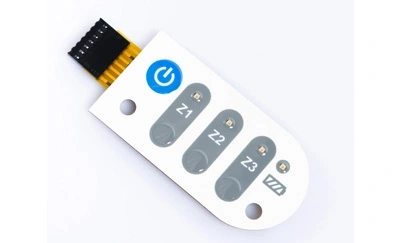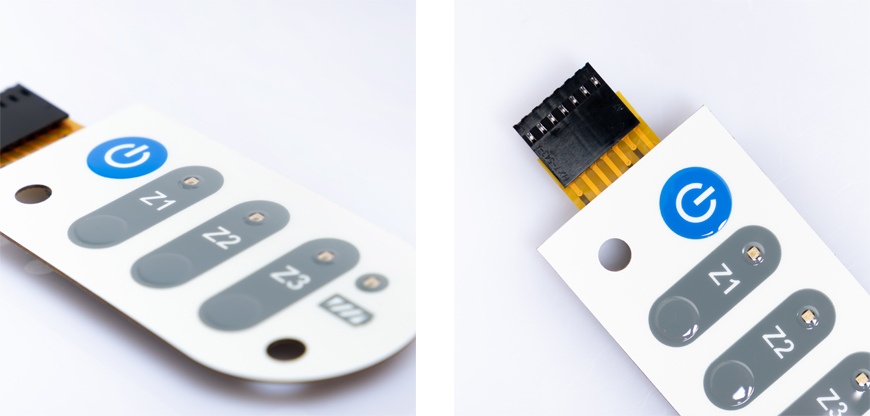
In the ever-evolving world of technology, electronic membrane switches have become an integral part of our daily lives. From microwave ovens to medical devices and industrial equipment, these seemingly inconspicuous components play a crucial role in enabling user interaction with various electronic devices. In this article, we will delve into the world of electronic membrane switches, exploring their history, functionality, applications, and the latest advancements in this fascinating technology.

At its core, an electronic membrane switch is a low-profile, flat-panel interface that facilitates user input by means of pressure-sensitive elements. These switches are typically comprised of multiple layers, including a graphic overlay, a spacer layer, and a circuit layer. When pressure is applied to the graphic overlay, it causes the layers to make electrical contact, thereby registering the desired input.
Electronic membrane switches have come a long way since their inception. They were first introduced in the mid-20th century and were primarily used in aerospace and military applications due to their reliability and resistance to harsh environmental conditions. Over the years, technological advancements have led to their widespread adoption in various industries.
To understand the inner workings of electronic membrane switches, let's break it down step by step:
1. Graphic Overlay:
The top layer of the switch, often made of a flexible material like polyester, features printed symbols and icons that guide user interaction.
2. Spacer Layer:
Beneath the graphic overlay lies a spacer layer, typically constructed from a flexible, non-conductive material like silicone. This layer provides the necessary separation between the graphic overlay and the circuit layer.
3. Circuit Layer:
The circuit layer is where the magic happens. It consists of a series of conductive traces and contacts. When pressure is applied to the graphic overlay, it compresses the spacer layer, causing the conductive traces to make contact and complete the circuit.
4. Actuation Force:
Electronic membrane switches require a certain amount of force to register an input, known as the actuation force. This ensures that accidental touches do not trigger unintended actions.
Electronic membrane switches find applications in a wide range of industries, including:
1. Medical Devices:
These switches are used in medical equipment, such as infusion pumps and diagnostic devices, where hygiene and durability are paramount.
2. Industrial Control:
In industrial settings, membrane switches are found on control panels for machinery and equipment, offering a reliable interface for operators.
3. Consumer Electronics:
From microwave ovens to remote controls, membrane switches enhance the user experience in numerous consumer electronics devices.
As technology continues to advance, so do electronic membrane switches. Recent developments include:
1. Enhanced Durability:
Manufacturers are designing switches to withstand harsh environments, ensuring longevity and reliability.
2. Customization Options:
Users can now personalize the appearance and functionality of membrane switches to meet specific requirements.
3. Integration with Touchscreens:
Membrane switches are being integrated with touchscreens to offer a seamless user interface experience.
Electronic membrane switches have quietly revolutionized the way we interact with electronic devices. Their durability, versatility, and adaptability make them an essential component in various industries. As technology continues to evolve, we can expect even more innovations in the realm of electronic membrane switches, further enhancing our user experiences.
1. Are electronic membrane switches waterproof?
Yes, many electronic membrane switches are designed to be waterproof, making them suitable for applications where moisture or liquids may be present.
2. Can I clean electronic membrane switches?
Absolutely. These switches are easy to clean and sanitize, making them ideal for medical and food industry applications.
3. How long do electronic membrane switches typically last?
The lifespan of membrane switches can vary depending on usage and quality, but they are known for their durability and can last for many years.
4. Can I get custom-designed membrane switches for my specific needs?
Yes, many manufacturers offer custom design options, allowing you to tailor the switches to your exact requirements.
5. Are electronic membrane switches cost-effective?
Yes, electronic membrane switches are cost-effective due to their durability and long lifespan, making them a wise investment for various industries.